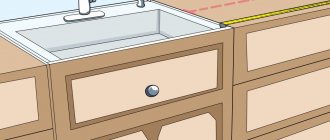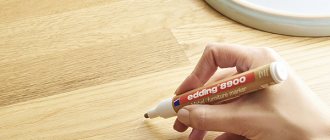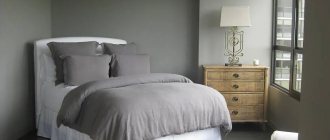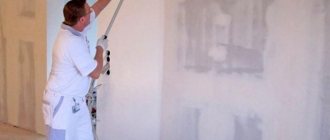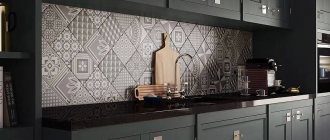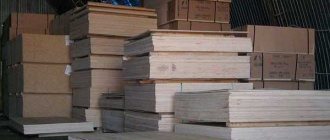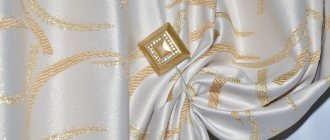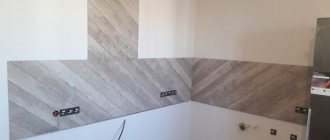Careful preparation for a trip to a hardware store and independent calculation of the footage of materials end in confusion after the seller asks: “How many linear meters do you need?” The same panic begins among owners of houses and apartments after builders and finishers draw up estimates.
To avoid such situations, let's try to figure out what a linear meter is, how it is translated into other units of measurement, where it is better to use such a term.
People are also interested in:
- How to calculate square meters
- How many meters in one hundred meters
Calculations
Correct calculation of consumable material will avoid unnecessary costs
Such a simple design as a fence around a site requires calculation accuracy like any other object.
Attention! Competently and in accordance with all the rules, construction diagrams along with all the required calculations will help to avoid installation errors and problems during operation.
The fence consists of several elements:
- main frame. This role is played by racks mounted in the foundation. They bear the main load;
- spans. As a rule, profile sheets, wooden planks, mesh and concrete are used for them;
- stiffening bars;
- fasteners
To avoid unnecessary financial costs, it is necessary to make simple measurements and calculations of how much the material will cost, using simple mathematical techniques. If the length of the fence is divided by the width of the building material that is used as a canvas, the result of the calculation will be a number corresponding to the required number of sheets.
Examples
Let's say the fenced area has the shape of a rectangle with sides of 30 m and 20 m. First of all, we determine how much the perimeter will be. And it will be equal to the length of the fence. To do this, the lengths of the sides are added and multiplied by 2. The perimeter of such a section will be 100 m.
For further calculations, it is enough to know the width of the raw materials used and the height of the fence. For example, it will be equal to 1 m, and the raw material will be corrugated board. As a result, you will need to buy 100 sheets. But just in case, it’s better to buy a little more to have a reserve.
If the width is approximately 2 m, a minimum of 50 sheets will be required. That is, to determine how many sheets are needed, you need to divide the perimeter by the width of the material. In order to determine how many meters of material will be required to build the fence, we multiply the perimeter by the expected height.
That is, to install a meter-long fence along a 100-meter perimeter, 100 linear quantities of building material will be required. To build a two-meter high fence, you will need 200 m of the same building material, and so on.
If the price of one linear value is known, then it is not at all difficult to calculate how much the building materials needed to install the fence will cost.
Is it important to calculate the mass of pipes or not?
When laying a pipeline, it is important to know at what distance to place metal supports to prevent the pipeline from sagging. When calculating the mass of a pipeline, the following parameters are taken into account: pipe mass; weight of liquid that is transported
When you have to build a load-bearing metal frame for a building, you have to make calculations. Calculating the weight of metal is a responsible task. The foundation of a structure with supports is subject to pressure from people, equipment, other room contents, and a steel frame. The last element for the mass of the building is the main one. For the construction of floors, a pipe with an I-beam or channel is used. These metal parts are highly durable.
How to become a professional
Turning can be studied throughout your life, since in addition to the theoretical part, a specialist must understand modern technology.
Progress does not stand still, which means there will always be an object of study. In addition, new samples of composite and polymer compounds are appearing among the materials being processed.
To master a profession, there are educational institutions and courses where highly qualified specialists pass on their experience to young students.
Information can also be gleaned from the Internet, where a variety of literature on turning is openly available.
The work requires good physical training, since very often turners suffer from a number of diseases. We can say that excellent health, advanced training courses and the ability to set up equipment will help you achieve the desired heights in your career.
Linear meter of kitchen
Manufacturers of kitchen furniture often indicate its basic cost not per set, but per linear meter. Thanks to this conventional unit, when drawing up an individual project, you can quickly calculate the approximate cost of the entire kitchen by multiplying its estimated length by the price per 1 linear meter. m.
Linear meter of kitchen
Video – Linear meter of kitchen
The basic kitchen package usually includes a set of cabinets and cabinets of standard height with the simplest finish, as well as the minimum necessary fittings. When drawing up an individual project, the cost per linear meter of the kitchen may change.
Basic kitchen equipment
The basic package does not include:
- built-in appliances;
- sink and faucet;
- hood;
- cornice, lighting panel;
- wall panels, apron;
- wall plinth.
Postforming countertops can also be calculated separately, not by the number of linear meters of the kitchen, but by the number of slabs used for its manufacture; this nuance also needs to be clarified with the manufacturer.
Postforming tabletop
The final cost of the kitchen is also affected by:
- Non-standard width and height of cabinets and cabinets;
- additional fittings, components;
- choice of other fittings, facade finishing, countertop material;
- calling specialists to install a kitchen and other additional services.
For advanced - drawing development
The measurements taken are enough to order the production and installation of the kitchen. However, you can go even further and make your own project. For this purpose, a clean draft of the drawings is created. It is done on graph paper. It is acceptable to draw on simple white sheets, the main thing is to maintain accuracy and scale.
The room is again drawn on paper from all sides, including the view from above. Drawing includes:
- room geometry;
- location of niches, ledges;
- location of the ventilation duct, its appearance;
- apron dimensions;
- location of household appliances;
- exact position of communications;
- placement of sockets, switches, valves, and other control elements;
- arrangement of other pieces of furniture.
In addition to frontal, side and top views, you can perform an isometric projection. Furniture elements of the desired type are drawn on the drawings. The explanatory table indicates the type of ceiling, interior style, wishes for the functionality of the set.
Turner ranks
With the growth of professional training, a turner can confirm his skills by passing exams to move to the next rank; the higher the rank, the more theoretical knowledge a specialist needs and, moreover, the finer mastery of tools he must demonstrate
- a 2nd category turner has the skills to work on universal machines, with parts of 12-14 quality;
- a 3rd category turner has confirmed his skills in setting up universal machines, working with a plasma torch, sharpening cutters, and is ready to process parts of 7-10 quality;
- a turner of the 4th category performs plasma-mechanical processing, controls sleds with three or more supports, cuts double-start threads;
- a 5th grade turner processes complex parts up to 6-7 accuracy grades, processes high-alloy steels and rolls multi-start threads;
- 6th grade turner is the highest level of professional skill, a specialist works with 5th grade and can adjust a thin tool with several mating surfaces.
Turner
Passing exams to move from rank to rank is separated by a period of at least a year.
And sometimes the production process at an enterprise can completely depend on a specialist with unique turning skills. Taking exams in the specialty of turning is open in many professional training centers; usually for the exam you will need to additionally take a training course and pay for retraining and the exam itself.
Installation of wooden fillet
But how to nail skirting boards onto linoleum or laminate, and is a PVC product suitable for this? In order to answer such questions, it is important to also consider the installation of wooden baseboards. Since before the widespread use of polyvinyl chloride, it was he who was the owner of this niche. First of all, you should understand that wooden baguettes are much more difficult to install
And in order not to spoil the product, it is worth considering how much it costs to nail the baseboard from a specialist. Because it can cost a lot of money to replace broken parts
First of all, you should understand that wooden baguettes are much more difficult to install. And in order not to spoil the product, it is worth considering how much it costs to nail the baseboard from a specialist. Because it can cost a large amount of money to replace broken parts.
Not sure? Then it’s better to trust the experts
Difficulties
If you have no doubts, then move on. The process itself has the same steps as installing a plastic baguette on screws and dowels. Only in the question of how to nail a wooden baseboard, you need to be more careful and take into account the characteristics of the room.
For example, a self-tapping screw driven at the wrong angle can crack the surface. The product may break on an uneven wall. It is also much more difficult to make an even angle on a wooden frieze. Here it’s better not to experiment without a miter box.
Special attention should be paid, of course, to the joints. If in the case of plastic, you can always correct the edges on the spot with a sharp knife, then a wooden panel must be carefully processed all the time in case of unsuccessful joining
Using a screwdriver during installation
Before the installation process, the product must be in the room for several days. So that the wood acclimatizes and is more stable while working with it. It is advisable to treat the surface with a substance that protects against mold.
If you figure out how to nail wooden skirting boards, the result will look like this
PVC and wood
Based on all of the above, we will determine what is best to use for a floor covered with linoleum or laminate.
A plastic frieze painted in wood tones will be visually indistinguishable from a wooden product. But in terms of installation complexity, wood loses significantly.
A plastic fillet of the appropriate color is difficult to distinguish from a wooden one from the outside
If in order to learn how to nail plastic skirting boards, it is enough to follow precise instructions and recommendations, then with wood it is advisable to already have some skills.
Well, the price of the issue is always relevant. Plastic baguette is much cheaper.
Linear meter of piece goods
Piece products - various strips, slats, plinths - usually have a standard length. To purchase the required number of piece products you need:
- find out the standard length of the product;
- divide the total number of linear meters for the project by the standard length of the product;
- Round the result up to the nearest whole number.
Calculation example
The kitchen project requires a wall plinth of 7 linear meters. The standard length of the plinth is 2 m. It is necessary to determine the required number of bars.
Wall plinth
- The total number of linear meters is divided by the standard length of the bar: 7/2 = 3.5 pcs.
- The result is rounded up and the required quantity is obtained - 4 pcs.
Note! Sometimes the length of piece products is non-standard, for example, when purchasing wooden blocks or slats. In this case, each selected unit of the product is measured and the values expressed in meters are summed up.
Story
In Europe, since the collapse of Charlemagne's empire, there have been no common standard measures of length: they could be standardized within one jurisdiction (which was often the size of a single market town), but there were no uniform measures, and each region could have its own. The reason for this was, to some extent, that measures of length were used in taxation (tax, for example, could be measured in a certain length of linen), and since each local ruler introduced his own taxes, laws established their own units of measurement for the corresponding area [8] .
universal measure”
, as the English philosopher and linguist John Wilkins called it in his 1668 essay [9]) or the “Catholic meter” (
metro cattolico)
of the Italian scientist and inventor Tito Livio Burattini from his 1675 work
Misura Universale
[10]), a measure that would be based on some natural phenomenon, and not on the decree of a person in power, and which would be decimal, which would replace the many different number systems, for example, the common duodecimal, that simultaneously existed at that time.
Meter is the length of the pendulum
Wilkins's idea was to choose for the unit of length the length of a pendulum with a half-period of oscillation equal to 1 s. Similar pendulums had recently been demonstrated by Christiaan Huygens, and their length was very close to the length of the modern meter (as well as to the units of length used at that time, such as the yard). However, it was soon discovered that the length measured in this way differed depending on the location of the measurements. French astronomer Jean Richet, during an expedition to South America (1671-1673), discovered an increase in the period of oscillation of the second pendulum compared to that observed in Paris. During his observations, the pendulum calibrated in Paris was shortened by 1.25 French lines (
2.81 mm), in order to avoid a time lag of 2 minutes per day. This was the first direct evidence of a decrease in gravity as one approaches the equator, and it gave a difference of 0.3% in length between Cayenne (in French Guiana) and Paris [11].
Until the French Revolution of 1789, there was no progress in establishing a “universal measure”. France was concerned about the issue of distributing length units; the need for reform in this area was supported by a variety of political forces. Talleyrand revived the idea of a seconds pendulum and proposed it to the Constituent Assembly in 1790, with the clarification that the standard of length would be measured at latitude 45° N (approximately between Bordeaux and Grenoble). Thus, the meter received the following definition: a meter is the length of a pendulum with a half-period of oscillation at a latitude of 45° equal to 1 s (in SI units this length is g
/π² (1 s) 2 ≈ 0.994 m).
Initially, this definition was adopted as the basis (May 8, 1790, French National Assembly). But despite the support of the assembly, as well as the support of Great Britain and the newly formed United States, Talleyrand's proposal was never implemented [12].
The meter is part of the Paris meridian
The issue of reform of units of measurement was submitted to the French Academy of Sciences, which created a special commission headed by the engineer and mathematician Jean-Charles de Borda. Borda was an ardent supporter of the transition to the decimal system: he improved the dial of the repeating theodolite, which made it possible to greatly improve the accuracy of measuring angles on the ground, and insisted that the instrument be calibrated in grads (1 ⁄100 quarter circle), rather than in degrees, so that the grad was divided for 100 minutes, and a minute for 100 seconds [13] . For Borda, the second pendulum method was an unsatisfactory solution because it was based on the then existing second, a non-decimal unit that was not suitable for the proposed decimal time system - a system where there are 10 hours in a day, 100 minutes in an hour, and 100 minutes in a minute. 100 seconds.
Instead of the second pendulum method, the commission - whose members included Joseph Louis Lagrange, Pierre-Simon Laplace, Gaspard Monge and Condorcet - decided that the new unit of measurement should be equal to one ten-millionth of the distance from the North Pole to the equator (a quarter of the Earth's circumference), measured along the meridian , passing through Paris [12]. Besides the advantage that this solution gave easy access to French surveyors, there was the important advantage that part of the distance from Dunkirk to Barcelona (about 1000 km, that is, one tenth of the total distance) could be laid out from starting and ending points located at sea level, and precisely this part was located in the middle of the quarter circle, where the influence of the shape of the Earth, which is not a regular sphere, but flattened, would be greatest [12].
On March 30, 1791, a proposal to define the meter in terms of the length of the meridian was accepted as follows: one forty-millionth of the Paris meridian (that is, one ten-millionth of the distance from the north pole to the equator along the surface of the earth's ellipsoid at the longitude of Paris). Interestingly, in modern units this is 1 1,000 000 000 05 000,000,000.05>>> meters. The idea of tying a unit of length to the Earth's meridian was not new: the nautical mile and league had previously been defined in a similar way.
The newly defined unit received the name “genuine and final meter” (French metre vrai et définitif) [1].
On April 7, 1795, the National Convention adopted a law introducing the metric system in France and instructed commissioners, which included S. O. Coulon, J. L. Lagrange, P.-S. Laplace and other scientists, carry out work on the experimental determination of units of length and mass. In 1792-1797, by decision of the revolutionary Convention, the French scientists Delambre (1749-1822) and Mechain (1744-1804) measured the 9°40′ arc of the Paris meridian from Dunkirk to Barcelona in 6 years, laying a chain of 115 triangles across the whole of France and part of Spain. Subsequently, however, it turned out that due to incorrect consideration of the polar compression of the Earth, the standard turned out to be 0.2 mm shorter; thus, the length of the meridian is only approximately 40,000 km.
The first prototype of the meter standard was made of brass in 1795.
It should be noted that the unit of mass (the kilogram, the definition of which was based on the mass of 1 dm³ of water), was also tied to the definition of the meter.
In 1799, a meter standard was made from platinum, the length of which corresponded to one forty millionth of the Paris meridian [14].
During Napoleon's reign, the metric system spread to many countries in Europe. The benefits of its use were so obvious that even after Napoleon was removed from power, the adoption of metric units continued [15]:
- 1816 - Belgium and Holland;
- 1832 - Portugal;
- 1849 - Spain and Greece;
- 1870 - Germany;
- 1873 - Austria;
- 1875 - Switzerland.
By the end of the 19th century, of the large countries, only Great Britain (and its colonies), the USA, Russia, China and the Ottoman Empire remained traditional measures of length.
The metric system was based on the meter as a unit of length and the kilogram as a unit of mass, which was introduced by the “Metric Convention” adopted at the International Diplomatic Conference of 17 states (Russia, France, Great Britain, USA, Germany, Italy, etc.) on May 20, 1875 [16] .
In 1889, a more accurate international standard meter was produced. This standard is made of an alloy of 90% platinum and 10% iridium [17] and has an “X” shaped cross section. Copies of it were deposited in countries where the meter was accepted as the standard unit of length.
Further development
In 1960, it was decided to abandon the use of a man-made object as a standard for the meter, and from that time until 1983, the meter was defined as the number 1,650,763.73 multiplied by the wavelength of the orange line (6,056 Å) of the spectrum emitted by the krypton isotope 86 Kr in a vacuum. After the adoption of the new definition, the platinum-iridium prototype of the meter continues to be stored at the International Bureau of Weights and Measures under the same conditions as defined in 1889. However, now its status has become different: the length of the prototype is no longer considered exactly equal to 1 m and its actual value must be determined experimentally. The prototype is no longer used for its original purpose.
By the mid-1970s, significant progress had been made in determining the speed of light. Suffice it to say that if in 1926 the error of the most accurate measurements at that time, carried out by A. Michelson, was 4000 m/s [18], then in 1972 it was reported that the error had decreased down to 1.1 m/s [19]. After repeated verification of the result obtained in various laboratories, the XV General Conference on Weights and Measures in 1975 recommended using as the value of the speed of light in vacuum a value equal to 299,792,458 m/s with a relative error of 4 10 −9, which corresponds to an absolute error of 1 .2 m/s [20] . Subsequently, in 1983, it was this value that the XVII General Conference on Weights and Measures formed the basis for a new definition of the meter [2].
Definitions of meter since 1795 [21]
| The basis | date | Absolute error | Relative error |
| 1 ⁄10,000,000 part of a quarter of the Parisian meridian, determined from the results of measurements carried out by Delambre and Méchain | 1795 | 0.5—0.1 mm | 10 −4 |
| Metre des Archives standard in platinum | 1799 | 0.05—0.01 mm | 10 −5 |
| Platinum-iridium profile at ice melting temperature (1st CGPM) | 1889 | 0.2—0.1 µm | 10 −7 |
| Platinum-iridium profile at ice melting temperature and atmospheric pressure, supported by two rollers (VII CGPM) | 1927 | unknown | unknown |
| 1,650,763.73 wavelengths of the orange line (6056 Å) of the spectrum emitted by the krypton isotope 86 Kr in vacuum (XI CGPM) | 1960 | 4 nm | 4·10 −9 [2] |
| The length of the path traveled by light in a vacuum in (1/299,792,458) seconds (XVII CGPM) | 1983 | 0.1 nm | 10 −10 |
You can record and print the results obtained
How much should you set back from the fence when building a house?
Our calculator allows you to record your calculations in a special field so that you can easily see your latest calculations. To do this, you need to click on the “Write” button, and the result of your calculations will appear in a special field.
Also, after you have calculated all the necessary data, you can click on the “Print” button and receive a printout of the results in a convenient form.
You can compare prices for selected items from all suppliers.
To do this you need to write down your calculations
Please note that the field with the recorded results contains positions that are of interest to you. Next, click “Calculate the entire application online”, and the system will take you to a page where the results of processing supplier prices will be shown
The range of water and gas pipes is often needed for online calculation of the weight of pipes of water and gas pipeline systems during construction, laying communications, when laying water and gas pipelines. A full range of pipes is used for the installation of heating systems and the manufacture of pipeline parts, in external drinking water supply networks. GOST 3262-62 for water and gas pipes allows the production of rolled pipes without threads at the ends or with threads, while the length of black pipes without threads ranges from 4 up to 12 m, and black and galvanized with threads - from 4 to 8 m. Steel water pipes GOST 3262-75 with increased manufacturing precision are used for parts of water supply and gas structures.
When welding pipelines, when water and gas pipes are used, manual welding or a coupling connection is used. Couplings are used for VGP pipes with normal wall thickness; welding is possible in all cases: light, conventional, reinforced VGP types. The range of steel water and gas pipes of normal precision allows for production from steels in accordance with GOST 380 and GOST 1050 without standardization of mechanical properties and chemical composition. The most popular range of pipes is black rolled pipes, used for water pipelines, gas pipelines and heating systems. High-precision VGP pipes are made from steels in accordance with GOST 1050. The range of galvanized pipes is used for parts of water supply and gas pipeline structures with high requirements for durability and corrosion resistance.
A round pipe is a type of rolled metal product produced by electric welding. The technology for the production of rolled pipe products is that steel sheet blanks from strips (steel sheets in rolls) undergo the process of unwinding and straightening on rolls, are cut to size of a given length and width, after which the edges of the strips are processed by chamfering. Next, the strips are butt welded, the sheet blanks enter the storage tank to supply the material to the forming machine, where they are profiled into a round pipe of the required diameter size. The thickness of the pipe wall (thin-walled, thick-walled) depends on the thickness of the sheet strip. At the next stage, a longitudinal seam is welded (either in a straight line or in a spiral) by melting the edges of the metal with high-frequency currents, closing them into a permanent connection to obtain solid metal over the entire cross-section of a round pipe. At the final stage of the technological process, the burr on the finished product is removed and the electric-welded pipe is cooled, calibrated to comply with GOST diameters within tolerances and cut to the required length.
Correspondence of inches to the nominal diameter of the pipe DN
Quarter inch – 8 mm; half inch - 15 mm; three quarters of an inch - 20 mm; inch – 25 mm; inch and a quarter – 32 mm; one and a half inches - 40 mm; two inches - 50 mm; two and a half inches - 65 mm; 4 inches - 100 mm.
This ratio between inches and millimeters greatly simplifies the selection of imported pipeline fittings for Ukrainian pipes, however, it is important to understand that these dimensions are also suitable for domestic branches, transitions, water taps, and gas valves. Imported couplings, taps, bends, tees, bends (and now imported stainless pipeline fittings are often used) have actual inch dimensions, which are slightly different from the connecting dimensions of VGP pipes
Source
How does a linear meter differ from a square meter?
Square meters measure the area of a surface or material. To calculate the area of the material, you need to multiply its length, expressed in meters, by its width, also in meters.
Square meter
Conversion from linear meters to square meters may be required if, according to the project, measurements are taken in linear meters, and the price of the material is indicated per square meters.
Good to know
If you receive a non-integer value (for example, 3.75), it must be rounded up. A slight excess of the norm will be better than its deficiency. Better lighting will be achieved when lighting fixtures are evenly placed around the entire perimeter of the ceiling. In such a situation, as well as with some special design approach to lighting fixtures, you can take a larger number of light bulbs, but with less power. For example, instead of 4 lamps of 10 W, you can take 9 lamps of 5 W. As you can see, the calculations themselves are quite simple, but in order to carry them out you need to understand the nature of illumination and what influences it. By calculating everything correctly, you can create a comfortable level of illumination in any room of the house.
Additional methods for finding cubic capacity
Figure 6. Folding volume of a stack of logs: 1 – side of the stack; 2 – end side of the stack.
In terms of measurement speed, the method of determining by diameter d and average run-off is suitable. In this embodiment, the average diameter is determined indirectly, through the runoff S:
S=(Dd)/L, (3),
where D and d are measured in centimeters without removing the bark, and L is measured in meters.
Determine the average diameter:
dс= d+S×L/2, (4),
and then you can use formula (1).
Now you need to take into account the volume that the bark occupies. In the place where the diameter is measured, carefully remove the bark. This is done when a circle is found in the middle of a log. At the ends, the thickness of the bark is taken into account by the clearly visible boundary between the wood and the bark.
If the indicator in the middle part is measured with the bark, then in this place its thickness is determined by subtracting twice the thickness of the bark, which is calculated from the end sections. First, find the sizes of the ends together with the bark, and then without the bark, as indicated above. The difference between these measurements will give twice the bark thickness at the ends, which is averaged. The result obtained is subtracted from dc measured without removing the bark.
Figure 7. Diagram of the stack and division of its total width into separate sections.
Another method of taking into account bark thickness is based on the use of a correction factor. This is the most time-consuming method. It is based on measuring the diameter at the middle of the log. First, dc is determined with the bark, and then without it. They measure to the nearest millimeter and each result is squared. To obtain a statistically reliable correction factor, the sample must contain at least 500 logs.
The sample must be completed in such a way that it maintains the appropriate proportions of the actual sizes of the rods in the total batch. The selection must be random.
Having summed dc2 of all specimens, we divide the sum without bark by the sum of squared diameters with bark. Now the result of measuring the volume of logs with bark must be multiplied by the resulting coefficient.
The cubic capacity of an individual stack is determined using the geometric method. An example of such a stack is shown in Fig. 6. In Fig. Figure 7 shows how a stack can look in real conditions and how its total width can be divided into separate sections. The width of one section should not exceed 3 m. The height of the stack H is determined by averaging the sections. Next, determine the volume using the formula:
V= H×B×L, (5).
Linear meter of fabric and other rolled materials
To measure a linear meter, you can use any measuring tool - a tape measure, a folding or wooden meter, or a measuring tape. On some materials, for example, decorative films, markings are applied on the inside, according to which you can measure the desired length without a tape measure.
How much is a linear meter of fabric?
Markings on tools or materials, as well as dimensions in drawings may be indicated in other units of measurement; they must be converted into meters according to the table.
Table. Converting various units of measurement to linear meters.
| Value in other units of measure | Value in linear meters | How to translate |
| 1m | 1 linear m | 1 meter of length is equal to 1 linear meter |
| 10 dm | 1 linear m | The value in dm must be divided by 10 |
| 100 cm | 1 linear m | The value in cm must be divided by 100 |
| 1000 mm | 1 linear m | The value in mm must be divided by 1000 |
Having selected the material of the required width and configuration, we begin measuring. Rolled materials are laid out on a flat surface and the required number of linear meters is measured, and then cut off.
Drywall box.
Making a plasterboard box with modern lighting on the kitchen ceiling is not at all difficult. To perform this part of the repair yourself, use the step-by-step instructions and recommendations in this article. So, about the plasterboard ceiling - in our case it is two-level, since part of the ceiling will be lowered below its main surface. This part exactly follows the shape of the countertop and is a plasterboard box with a built-in kitchen hood and spotlights.
– guides for drywall 27x28 (for the perimeter) and 60x27 (for crossbars);
– self-tapping screws for drywall, self-tapping screws for connecting guides (bugs);
– dowel-nails (used when attaching guides to the ceiling and walls).
We start by marking the ceiling and walls; the accuracy of its application determines how the entire plasterboard box will look after repair. It is necessary to take into account the thickness of the drywall when marking. Calculation of drywall, online calculator.
Guides 27x28 (perimeter) are attached according to preliminary markings. For this:
– mark and drill holes in the ceiling and walls using a hammer drill and a drill with a diameter of 6 mm;
– we secure the guides around the perimeter with dowel nails.
We cut out the hangers from the 60x27 guides using metal scissors. The size of the hanger depends on the height of the required plasterboard box.
The finished hangers are attached with self-tapping screws to a guide located on the ceiling. Then we attach a guide to the hangers, forming the lower perimeter of the edge of the box.
The bottom guide should run along its entire length without kinks and have the same distance from its bottom edge to the ceiling.
Now we make markings for the provided lighting and secure the future wiring to the ceiling so that nothing interferes with the subsequent installation of drywall.
We cut the transverse guides 60x27 to size and place them every 40-60 cm. At the same time, we try not to get into the places of the built-in lamps for further convenience when cutting drywall.
Before fixing with a self-tapping screw, the guide is aligned perpendicular to the wall.
The front side of the plasterboard box is also checked for perpendicularity and the entire structure is secured.
We cover the front side of the box with strips of plasterboard. To do this, we attach them with self-tapping screws every 10-15 cm to the metal guides.
At this stage, we hide all communication wires and devices under the structure of the future plasterboard box. In our case, a ventilation duct.
Sheets of plasterboard cut to size are fixed to the ceiling. For convenience in further work, transfer the locations of the lamps to the drywall and drill small holes at once.
After assembling the plasterboard box, the work is carried out according to the classical scheme:
– glue the joints with serpyanka;
– we insert reinforcing corners around the perimeter;
The fillets, the horizontal surface of the box and the entire ceiling are painted white. Vertical surfaces are painted simultaneously with the walls in the corresponding color.
the ceiling has one plane, the box (closed) has three. In addition, the box has an additional 2-4 external corners. Therefore, if there are no separate prices for the box, for simplicity it is calculated as you calculated it. This is normal. . the border is considered molding always in bathrooms.2) Second question about tiles - builders again want to get paid for laying borders by linear meters, and not as all the tiles by squares. This is strange for me!
Additional information on the topic:
- Is it possible to glue ceramic tiles with liquid nails to drywall?
- How to plaster plasterboard slopes on windows
- Is it possible to glue tiles on drywall in the bathroom reviews pros and cons
- Is it possible to plaster drywall with cement plaster?
- Plasterboard ceiling with LED lighting around the perimeter
